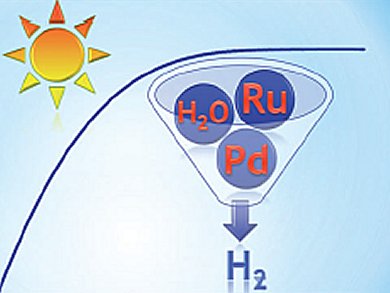In light of the diminishing fossil resources and the constantly increasing demand for energy, great attention has been directed towards research on the efficient, clean and sustainable generation and storage of energy. One of the most simple and promising, yet very challenging, approaches is the production of hydrogen directly from water and other protic sources by using photocatalytic systems, capable of performing such reactions under irradiation with light.
Uwe Rosenthal and colleagues, University of Rostock, Germany, present a new intermolecular heterobimetallic system for photocatalytic water reduction. It consists of a photosensitizer of the type [Ru(bpy)2(L)](PF6)2 (L = bidentate ligand), a dichloro palladium complex PdCl2(L) serving as the water reduction catalyst, and triethyl amine as electron donor. Variations of the ligand as well as of the palladium source results in a significant improvement of the performance of the catalyst system.
The main advantages of the systems are their low molecular complexity and the fact that they are readily available through well-established synthetic procedures.
- An Intermolecular Heterobimetallic System for Photocatalytic Water Reduction,
Sven Hansen, Marcus Klahn, Torsten Beweries, Uwe Rosenthal,
ChemSusChem 2012.
DOI: 10.1002/cssc.201100794




